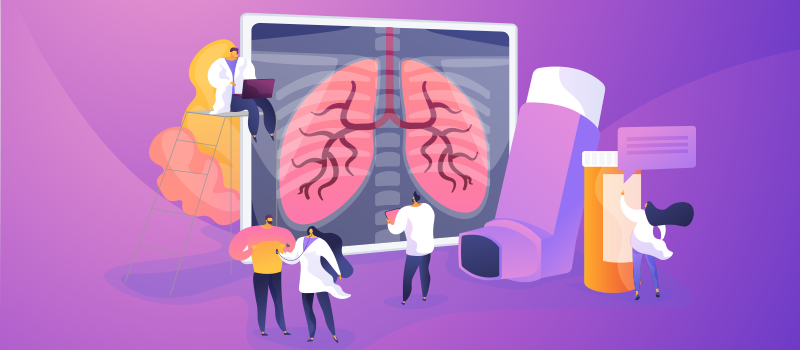What’s the Buzz
The Bee Healthy Blog
Topical NSAID Uses

Nonsteroidal anti-inflammatory drugs (NSAIDs) are some of the most commonly used drugs worldwide to relieve pain and inflammation. It’s important to know that they can cause side effects when taken by mouth, including serious digestive issues like stomach ulcers and bleeding. Topical NSAIDs are non-steroidal anti-inflammatory drugs applied directly to the skin in an area of pain. Using topical NSAIDs can significantly reduce the risk of gastric side effects. Please continue reading to learn more about the uses and benefits of topical NSAIDs.
What is a topical NSAID?
Topical NSAIDs are non-steroidal anti-inflammatory drugs available in the form of gels, creams, liquids, sprays, patches, and plasters, in different strengths. They are used to treat pain and inflammation locally by directly applying to the skin of the affected body part. Some of the topical NSAID preparations available in the U.S. and their brand names are listed below:
- Topical diclofenac sodium 1% gel (Voltaren Arthritis Pain).
- Topical diclofenac sodium 1.5% liquid (Pennsaid).
- Topical diclofenac solution 2% liquid (Pennsaid).
- Topical diclofenac 3% gel (Solaraze).
- Diclofenac epolamine 1.3% patch (Flector).
- Compounded preparations (NSAIDs like ibuprofen, ketoprofen, piroxicam, and indomethacin can be compounded into topical formulations by specialty/compounding pharmacies).
When are topical NSAIDs used?
Topical nonsteroidal anti-inflammatory drugs (NSAIDs) are available both over the counter and by prescription. They are used to treat:
- Painful arthritic joints- Topical NSAIDs like Voltaren Arthritis Pain Relief Gel are approved to treat rheumatoid arthritis (RA) and osteoarthritis (OA); they work best to relieve pain in small joints like the hands and joints close to the surface like the elbows, knees, and ankles.
- Muscle pain, strains, and sprains- Topical diclofenac gel can penetrate the skin in an area of acute musculoskeletal pain and provide relief.
- Actinic keratosis- Diclofenac gel 3% (Solaraze) is used to treat actinic keratosis (rough, scaly patches on the skin due to years of sun exposure).
Your doctor may advise using topical NSAIDs instead of oral NSAIDs if:
- You are 65+ years of age- Older adults are at higher risk of stomach issues and cardiovascular risk factors from NSAIDs. Notably, NSAIDs have a black-box warning for increasing the chance of a heart attack or stroke.
- You have a sensitive stomach- Topical NSAIDs are applied directly to the skin of the affected area. The risk of gastric side effects like stomach ache, ulcers, and bleeding with these medications is much lower than with oral NSAIDs. However, the risk is not zero because some medicine can still travel to the stomach through the blood.
- You are at risk of heart disease- The amount of medicine absorbed into the bloodstream is considerably lower with topical preparations than oral NSAIDs, so topical formulations are safer for people at risk of heart disease. However, some active ingredients can still enter the bloodstream and affect the cardiovascular system, so there is still a risk, albeit smaller.
Your doctor may advise you to avoid topical NSAIDs if:
- You are currently taking oral NSAIDs- You should not apply topical diclofenac or any topical NSAID to a painful joint if you take aspirin or other oral NSAIDs because of the risk of accumulated adverse effects, even with different routes of administration.
- Your skin is sensitive- Possible side effects of topical NSAIDs include local skin reactions at the application site. A drug like diclofenac sodium gel may not be appropriate if you have sensitive skin.
- You have several arthritic joints- People with arthritis in many joints usually do better on oral NSAIDs because they work faster and provide longer-lasting relief. If you use a topical preparation like Voltaren Arthritis Pain Relief Gel on multiple arthritic joints, it’s important to use a dosing card. This will ensure you are using the correct amount and not exceeding the total recommended dosage of the medication.
What is the advantage of using topical NSAIDs?
Topical non-steroidal anti-inflammatory drugs (NSAIDs) are convenient, effective, and safe. They come in various forms like gels, creams, sprays, liquids, and patches. They are applied to the skin directly in the area of arthritis pain or musculoskeletal pain. Topical NSAIDs penetrate the skin, enter the painful joints or tissues, and reduce pain locally. The amount of medication absorbed into the blood is much lower than the oral medications. Therefore, topical NSAIDs can effectively treat acute pain without causing as many side effects, specifically upset stomach, stomach ulcers, and stomach bleeding.
Are topical NSAIDs effective?
Studies have shown that topical NSAIDs can provide adequate moderate pain relief. Many conditions that cause acute pain can be treated as effectively as oral NSAIDs with fewer side effects
However, some studies have found that in people with osteoarthritis, only about 10% more people get pain relief with topical diclofenac compared to topical placebo (a dummy preparation with no active ingredients).
In people with rheumatoid arthritis, the effectiveness of topical NSAIDs varies widely, from 18% to 92% of patients reporting pain relief.
In terms of dosage forms, ibuprofen gel and diclofenac plaster have been found to be the most effective. Among people who used diclofenac and ketoprofen gel for musculoskeletal pain, 70-80% had considerable improvement in pain compared to 20-30% of those who used a topical placebo.
The key advantage of topical NSAIDs is that they have a much better safety profile than oral formulations. Stomach upset and other gastrointestinal side effects are rare. The most commonly reported side effect with topical NSAID medicines is local skin irritation (redness and itching) at the application site. No serious side effects have been reported.
How to Use Topical NSAIDs
You should apply topical NSAID solution (Pennsaid) or diclofenac gel (Voltaren Arthritis Pain) to clean, dry, and intact skin. Do not apply the medication to peeling, broken, swollen, or infected skin. These medications are for external use only. Avoid getting the medication into your eyes, nose, or mouth; rinse with water immediately if this occurs, and call your doctor if you experience any irritation.
Place the dosing card that came with your diclofenac gel or ketoprofen gel on a flat surface to measure the correct dose. Gently rub the medication into your skin at the application site.
Do not cover the area with a bandage or dressing or wear protective clothing like gloves for about 10 minutes. Do not apply heat to the treated area. Wait for 30-60 minutes before showering or bathing after applying a topical NSAID gel or solution.
It may take up to 7 days or more for you to get the full benefit from an over-the-counter topical NSAID preparation for acute pain. Prescription topical NSAIDs may provide faster pain relief. If your pain worsens or does not improve after 7 days of treatment, you should contact your doctor to be further examined.
References:
- https://pubmed.ncbi.nlm.nih.gov/20631465/
- https://www.arthritis.org/drug-guide/medication-topics/topical-nsaids-offer-joint-pain-relief
- https://www.cochrane.org/CD007402/SYMPT_topical-non-steroidal-anti-inflammatory-drugs-acute-musculoskeletal-pain-adults
- https://link.springer.com/article/10.2165/00003495-200060030-00004











SOCIAL